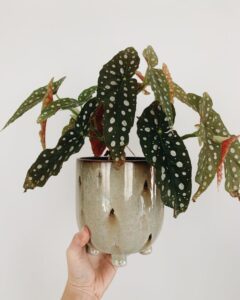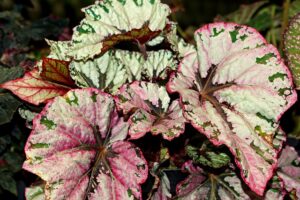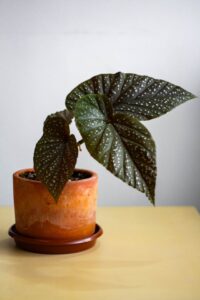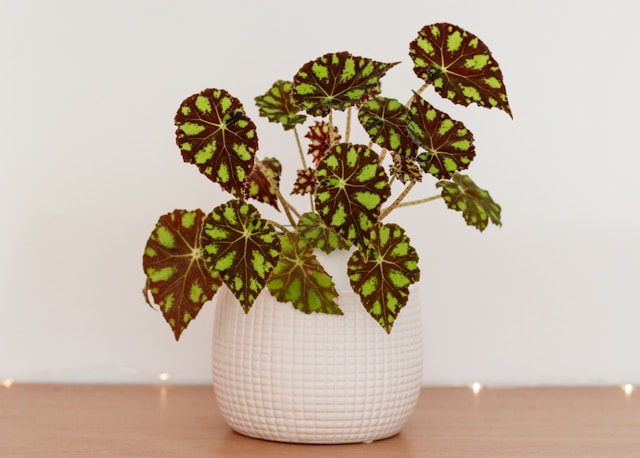Begonias are one of the most beloved plants among gardening enthusiasts and indoor plant lovers alike. Known for their vibrant flowers and unique foliage, begonias offer a stunning visual appeal that can brighten up any space. With over 1,800 species and countless hybrids, begonias are as diverse as beautiful. This comprehensive guide will explore the various types of begonias, their care requirements, and tips for successfully growing them in your garden or home.

Introduction to Begonias
Begonias are native to tropical and subtropical regions, making them a popular choice for both indoor and outdoor gardening. Their popularity stems from their ability to adapt to a wide range of environments, as well as their stunning foliage and flowers. From the vibrant, showy blooms of tuberous begonias to the intricate leaf patterns of rex begonias, there is a begonia type for every gardener.
Types of Begonias
Begonias are classified into three main categories: fibrous-rooted begonias, rhizomatous begonias, and tuberous begonias. Each of these categories has distinct characteristics and care requirements.
1. Fibrous-Rooted Begonias
Fibrous-rooted begonias are known for their thin, fibrous roots and are often grown as houseplants or bedding plants. They are easy to care for and can thrive in a variety of conditions. This category includes the following subtypes:
– Wax Begonias (Begonia semperflorens): Wax begonias are among the most common fibrous-rooted varieties, often seen in gardens and containers. They feature small, waxy leaves and produce clusters of pink, red, or white flowers throughout the growing season. Wax begonias prefer bright, indirect light and well-draining soil. They are perfect for beginners due to their low maintenance needs.
– Angel Wing Begonias (Begonia coccinea): Named for their wing-shaped leaves, angel wing begonias are prized for their unique foliage and delicate, cascading flowers. These begonias can grow quite tall, making them ideal for hanging baskets or as statement plants in containers. They thrive in bright, indirect light and appreciate regular watering.
– Dragon Wing Begonias: Similar to angel wing begonias, dragon wing begonias boast lush, green leaves and vibrant red or pink flowers. They are more tolerant of various light conditions and are known for their robust growth, making them a favourite for outdoor planting.
2. Rhizomatous Begonias
Rhizomatous begonias are characterized by their thick, horizontal stems known as rhizomes. These begonias are primarily grown for their stunning foliage, which comes in an array of colours, patterns, and textures. Popular rhizomatous begonias include:
– Rex Begonias (Begonia rex): Rex begonias are perhaps the most visually striking of all begonias, with their intricate leaf patterns and bold colours. Their leaves can feature combinations of silver, red, purple, and green, making them a popular choice for indoor gardening. Rex begonias prefer high humidity and indirect light, making them perfect for terrariums or shaded garden spots.
– Escargot Begonias: Named for their snail-like leaf pattern, escargot begonias feature spiralled foliage with a combination of green and silver hues. These begonias are ideal for adding a touch of whimsy to your plant collection and thrive in similar conditions to rex begonias.
– Beefsteak Begonias (Begonia erythrophylla): With their glossy, red-tinted leaves, beefsteak begonias are a striking addition to any garden or indoor space. They grow well in shaded areas and prefer well-draining soil.

3. Tuberous Begonias
Tuberous begonias are known for their show-stopping blooms and are often grown as annuals in cooler climates. They develop from tubers, which store nutrients and allow the plant to survive dormant periods. Key types of tuberous begonias include:
– Nonstop Begonias: As the name suggests, nonstop begonias produce an abundance of large, colourful flowers throughout the growing season. They are perfect for hanging baskets, window boxes, and garden beds. These begonias thrive in partially shaded areas and require regular watering.
– Pendula Begonias: Pendula begonias are known for their trailing habit and cascading flowers, making them ideal for hanging baskets and containers. Their blooms come in various colours, including red, yellow, orange, and white, providing a stunning display throughout the summer months.
– Multiflora Begonias: With their profusion of small, vibrant blooms, multiflora begonias are perfect for garden borders and mixed flower beds. They are easy to grow and maintain, making them a favourite among gardeners looking for a splash of colour.
Caring for Begonias
While begonias are relatively low-maintenance plants, they do have specific care requirements to ensure healthy growth and vibrant blooms. Here are some essential care tips for begonias:

Light Requirements
– Fibrous-Rooted Begonias: Prefer bright, indirect light but can tolerate partial shade. Avoid direct sunlight, as it can scorch their delicate leaves.
– Rhizomatous Begonias: Thrive in shaded areas or indirect light, making them ideal for indoor settings or shaded garden spots.
– Tuberous Begonias: Require bright, indirect light to promote blooming. Morning sun and afternoon shade are ideal for these begonias.
Watering
– Consistency is Key: Begonias prefer consistent moisture levels but are prone to root rot if overwatered. Allow the soil to dry slightly between waterings and ensure proper drainage.
– Humidity Matters: Rhizomatous begonias, in particular, enjoy high humidity levels. Consider placing a humidity tray or misting the plants regularly to maintain optimal conditions.
Soil and Fertilization
– Well-Draining Soil: All types of begonias thrive in well-draining soil to prevent waterlogged roots. A mix of peat moss, perlite, and potting soil works well for most begonias.
– Regular Feeding: During the growing season, feed begonias with a balanced, water-soluble fertilizer every 4-6 weeks to promote healthy growth and vibrant blooms.
Temperature and Humidity
– Temperature Preferences: Begonias prefer moderate temperatures between 60-75°F (15-24°C). Protect them from frost and extreme heat to ensure optimal growth.
– Humidity Levels: Begonias, especially rhizomatous varieties, thrive in high-humidity environments. Consider using a humidifier or placing a tray of water near the plants to increase humidity levels.
Common Pests and Problems
Despite their resilience, begonias can fall victim to pests and diseases. Here are some common issues to watch out for:
– Powdery Mildew: Characterized by a white, powdery coating on leaves, powdery mildew is a common fungal issue. To prevent it, ensure proper air circulation and avoid overhead watering.
– Aphids and Mealybugs: These pests can infest begonias and cause damage to leaves and stems. Regularly inspect plants and use insecticidal soap or neem oil to manage infestations.
– Root Rot: Overwatering or poorly draining soil can lead to root rot, a serious issue for begonias. To prevent this, ensure proper drainage and allow the soil to dry between waterings.
Propagating Begonias
Propagating begonias is a rewarding process that allows gardeners to expand their plant collection. Here are some common methods for propagating begonias:
Stem Cuttings
1. Select a Healthy Stem: Choose a healthy stem with several leaves and cut a 4-6 inch section just below a leaf node.
2. Remove Lower Leaves: Remove the lower leaves from the cutting, leaving a few at the top.
3. Plant the Cutting: Dip the cut end in rooting hormone and plant it in a pot with well-draining soil. Water lightly and cover with a plastic bag to create a humid environment.
4. Provide Care: Place the cutting in bright, indirect light and keep the soil moist. Roots should develop in 3-4 weeks, after which the new plant can be potted individually.
Leaf Cuttings (Rex Begonias)
1. Select a Mature Leaf: Choose a mature, healthy leaf and cut it from the plant.
2. Prepare the Leaf: Cut the leaf into sections, ensuring each section has a main vein.
3. Plant the Sections: Lay the sections on moist soil, pressing them down lightly. Cover with a plastic bag to maintain humidity.
4. Wait for Growth: Place the container in indirect light and keep the soil moist. New plants should begin to grow from the leaf sections within a few weeks.
Landscaping and Design Ideas with Begonias
Begonias offer endless possibilities for creative landscaping and interior design. Here are some ideas to inspire your next gardening project:
– Colorful Borders: Use tuberous begonias to create vibrant borders in your garden. Their profusion of blooms adds a splash of colour that lasts throughout the summer.
– Hanging Baskets: Angel wing and dragon wing begonias make excellent choices for hanging baskets, creating a cascading effect with their trailing foliage and flowers.
– Indoor Accents: Place rex begonias in decorative pots to add a touch of elegance to your indoor spaces. Their striking foliage serves as a focal point in any room.
– Shade Gardens: Incorporate








